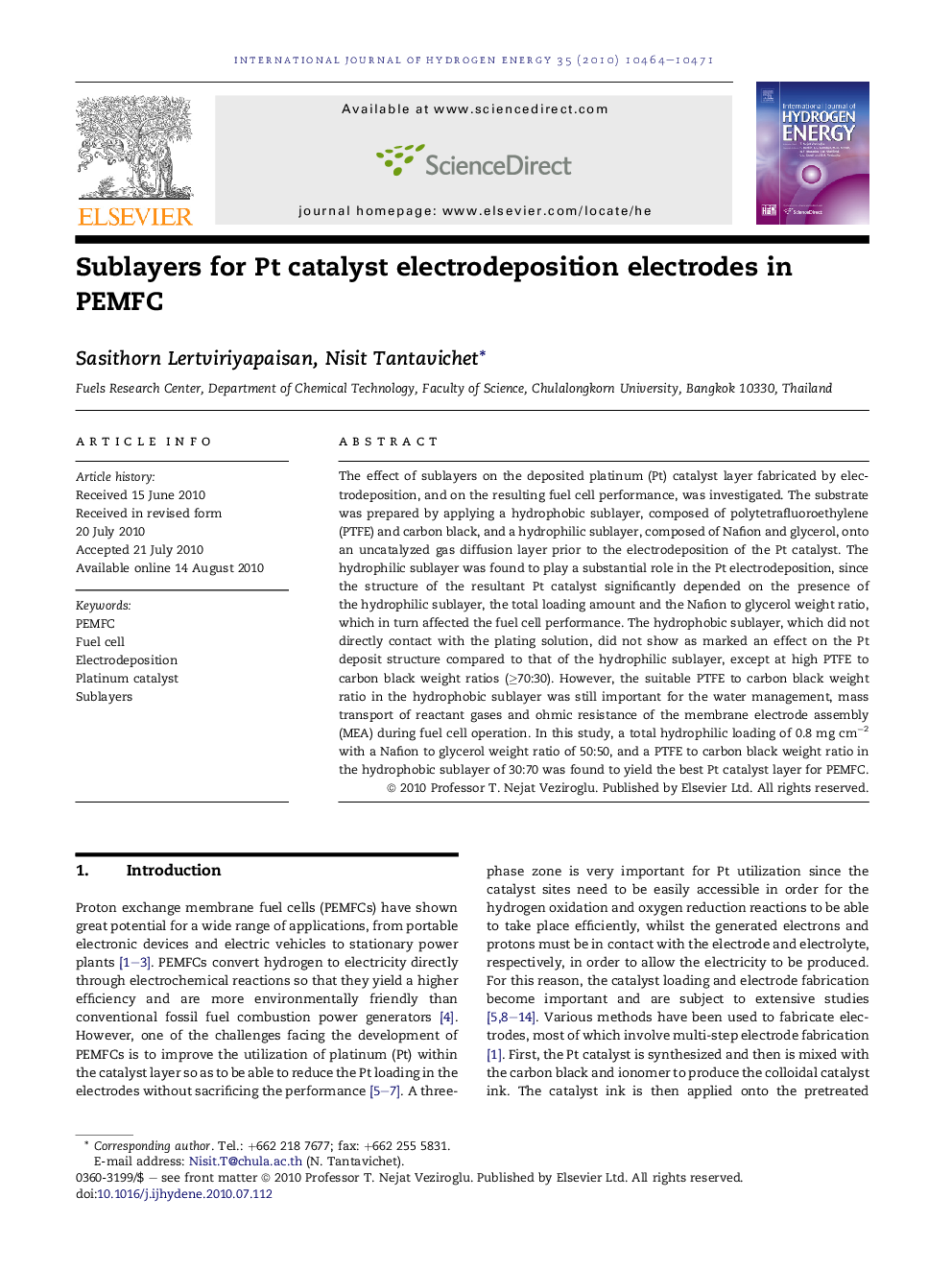| Article ID | Journal | Published Year | Pages | File Type |
|---|---|---|---|---|
| 1280107 | International Journal of Hydrogen Energy | 2010 | 8 Pages |
The effect of sublayers on the deposited platinum (Pt) catalyst layer fabricated by electrodeposition, and on the resulting fuel cell performance, was investigated. The substrate was prepared by applying a hydrophobic sublayer, composed of polytetrafluoroethylene (PTFE) and carbon black, and a hydrophilic sublayer, composed of Nafion and glycerol, onto an uncatalyzed gas diffusion layer prior to the electrodeposition of the Pt catalyst. The hydrophilic sublayer was found to play a substantial role in the Pt electrodeposition, since the structure of the resultant Pt catalyst significantly depended on the presence of the hydrophilic sublayer, the total loading amount and the Nafion to glycerol weight ratio, which in turn affected the fuel cell performance. The hydrophobic sublayer, which did not directly contact with the plating solution, did not show as marked an effect on the Pt deposit structure compared to that of the hydrophilic sublayer, except at high PTFE to carbon black weight ratios (≥70:30). However, the suitable PTFE to carbon black weight ratio in the hydrophobic sublayer was still important for the water management, mass transport of reactant gases and ohmic resistance of the membrane electrode assembly (MEA) during fuel cell operation. In this study, a total hydrophilic loading of 0.8 mg cm−2 with a Nafion to glycerol weight ratio of 50:50, and a PTFE to carbon black weight ratio in the hydrophobic sublayer of 30:70 was found to yield the best Pt catalyst layer for PEMFC.
